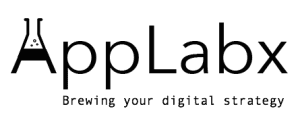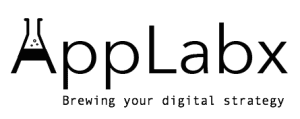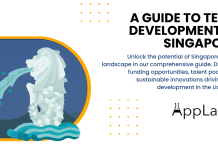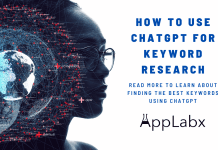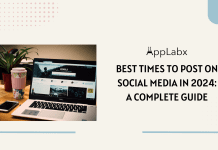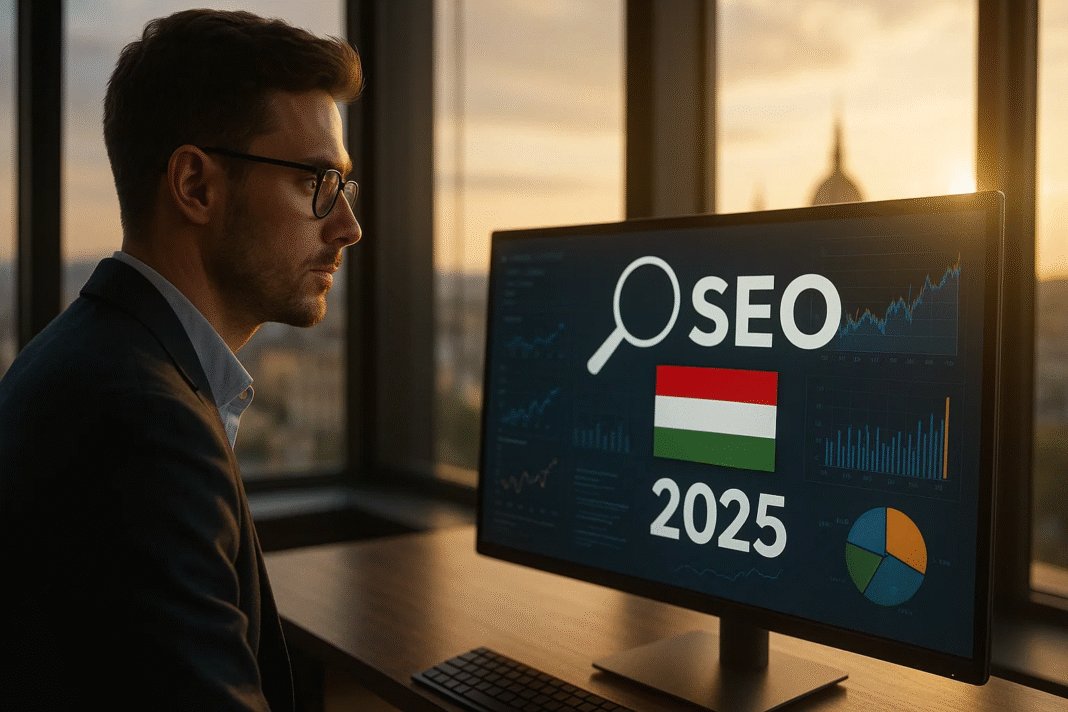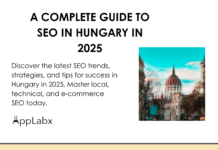Key Takeaways
- AI-driven search, mobile-first optimization, and structured data are redefining SEO strategies in Hungary for 2025.
- Building topical authority and enhancing E-E-A-T are critical for sustaining high search rankings and user trust.
- Multi-modal search and AI adoption offer untapped growth opportunities for Hungarian businesses ready to innovate.
In 2025, Hungary’s digital ecosystem is undergoing a transformative shift, driven by the rapid integration of artificial intelligence, changing consumer search behaviours, and evolving search engine algorithms. Search Engine Optimization (SEO) in Hungary has matured into a sophisticated, data-driven discipline where businesses must blend advanced technical practices with high-quality, user-focused content strategies. As a Central European nation with a growing online economy, Hungary presents unique SEO opportunities and challenges for brands seeking to expand their digital footprint both locally and internationally.
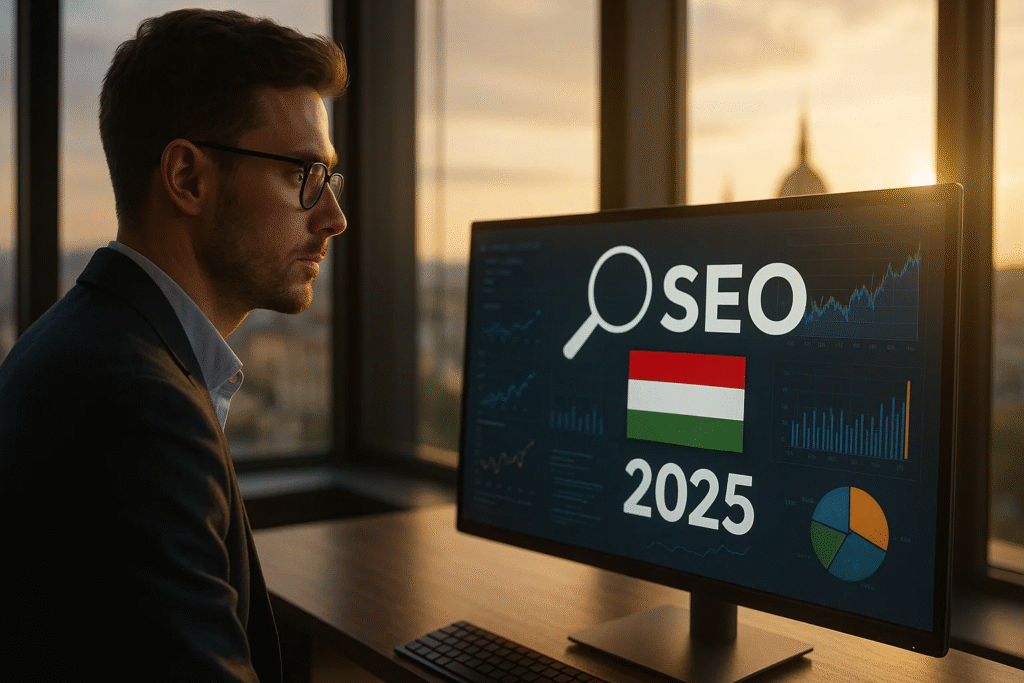
Hungary’s internet penetration rate now exceeds 90%, with mobile usage dominating search queries and shaping content delivery priorities. This surge in digital connectivity has pushed businesses to invest heavily in mobile-first indexing, lightning-fast page speeds, and user experience (UX) optimisation to maintain visibility in competitive search results. Additionally, the rise of AI-powered search features, such as Google’s AI Overviews and Bing’s AI-enhanced results, has shifted the SEO focus from ranking purely for blue links to optimising for AI-driven answer engines. Hungarian businesses now face the dual challenge of optimising for both traditional SERPs and AI-generated responses, ensuring their content remains discoverable across multiple search formats.
Local SEO has become a critical battleground, with Google Business Profile optimisation, location-specific keyword targeting, and locally relevant content strategies helping businesses connect with audiences in Budapest, Debrecen, Szeged, and beyond. For multilingual brands operating in Hungarian and other European languages, multilingual SEO strategies have emerged as a decisive factor for regional market expansion, ensuring search visibility across diverse linguistic landscapes.
The Hungarian SEO landscape in 2025 is also shaped by E-E-A-T (Experience, Expertise, Authoritativeness, and Trustworthiness) signals, as search engines increasingly prioritise credible, well-researched, and authoritative content. In industries such as finance, health, legal, and education, the implementation of structured data markup, robust content validation, and expert-backed articles is now essential for sustained ranking success.
Technological advancements are redefining the SEO toolkit in Hungary. Leading agencies and in-house teams are leveraging premium SEO tools such as Ahrefs, SEMrush, and AI-enhanced analytics platforms to track keyword rankings, monitor AI-generated visibility, and uncover untapped search opportunities. Automation is streamlining reporting, keyword clustering, and competitor tracking, while predictive SEO powered by AI is enabling businesses to anticipate algorithm updates and adapt strategies in advance.
For e-commerce businesses, the Hungarian market demands a specialised approach to product SEO, with structured product feeds, high-quality imagery, and optimised product descriptions tailored to both local and cross-border audiences. Voice search optimisation is also gaining relevance, as smart assistants like Google Assistant and Alexa become increasingly common in Hungarian households.
In summary, SEO in Hungary in 2025 is not just about ranking for keywords—it is about creating an adaptive, multi-platform digital strategy that aligns with evolving algorithms, technological advancements, and user expectations. Businesses that invest in AI-driven optimisation, local market targeting, multilingual capabilities, and authoritative content creation will be well-positioned to capture attention in Hungary’s dynamic and competitive search environment.
But, before we venture further, we like to share who we are and what we do.
About AppLabx
From developing a solid marketing plan to creating compelling content, optimizing for search engines, leveraging social media, and utilizing paid advertising, AppLabx offers a comprehensive suite of digital marketing services designed to drive growth and profitability for your business.
At AppLabx, we understand that no two businesses are alike. That’s why we take a personalized approach to every project, working closely with our clients to understand their unique needs and goals, and developing customized strategies to help them achieve success.
If you need a digital consultation, then send in an inquiry here.
Or, send an email to [email protected] to get started.
The State of SEO in Hungary in 2025
- Hungary’s Digital Landscape in 2025: A Data-Driven Foundation
- The Evolution of SEO: Key Trends and Strategic Imperatives for 2025
- The Hungarian SEO Market: A Financial and Competitive Overview
- Competitive Analysis: A Look at Top-Performing Websites in Hungary
- Tools and Technologies: Powering Hungarian SEO in 2025
- Strategic Recommendations and Outlook for Hungarian Businesses
1. Hungary’s Digital Landscape in 2025: A Data-Driven Foundation
A. Internet & Social Media Penetration: A Saturated Market
Understanding the trajectory of SEO in Hungary for 2025 requires a deep examination of the nation’s demographic and digital ecosystem. The environment is characterised by high internet penetration, extensive social media adoption, and an increasingly competitive content landscape. While the infrastructure is robust, organic audience expansion has plateaued, shifting the strategic focus from simple reach to engagement depth, authority building, and market segmentation.
Internet Penetration: A Mature and Competitive Market
- Total Internet Users:
- 9.09 million individuals online in January 2025.
- 94.1% penetration rate of the national population — indicating market maturity.
- Trend Analysis:
- Slight decline of 26,000 users (-0.3%) compared to January 2024.
- Growth opportunities from new user acquisition are limited; the challenge lies in redistributing attention among existing audiences.
- Demographic Impact:
- 21.2% of the population is aged 65+, with slower adoption of advanced digital behaviours.
- Persistent digital divide between urban and rural regions, affecting content accessibility and engagement strategies.
- SEO Implications:
- Optimisation efforts must target specific user segments rather than broad market expansion.
- Strategies should prioritise hyper-localisation, high-value niche content, and authority-driven link acquisition to secure competitive visibility.
Social Media Engagement: A Highly Connected Audience
- Active Social Media Identities:
- 7.04 million profiles as of January 2025.
- 72.9% of the total population actively engages on social platforms.
- User Behaviour:
- High levels of cross-platform engagement suggest that social-search synergy is critical.
- Short-form video, interactive content, and live streaming continue to dominate audience attention patterns.
- SEO Implications:
- Integrated strategies combining search visibility with social amplification can capture more touchpoints in the user journey.
- Social proof, influencer collaborations, and share-worthy content have become essential in organic ranking ecosystems.
Market Positioning & Growth Challenges
- Organic Reach Constraints:
- Limited influx of new internet users forces businesses to compete over the same audience pool.
- Keyword saturation and SERP competition have intensified, making content differentiation and brand trust signals more critical.
- Emerging Opportunities:
- Leveraging AI-driven personalisation for segmented audiences.
- Local SEO dominance for small to mid-size enterprises aiming to capture geo-specific search demand.
- Targeting underserved rural markets with mobile-first strategies and low-bandwidth-optimised content.
Hungary’s 2025 Digital Metrics Overview
| Metric | Value (Jan 2025) | Yearly Change | SEO Implication |
|---|---|---|---|
| Internet Penetration Rate | 94.1% | -0.3% | Market saturation, focus on audience share |
| Total Internet Users | 9.09M | -26K | Retention & engagement over acquisition |
| 65+ Population Share | 21.2% | Stable | Need for simplified UX & accessibility |
| Social Media Penetration | 72.9% | Stable | Social-search integration crucial |
| Active Social Media Accounts | 7.04M | Stable | Influencer & content collaboration potential |
B. The Mobile-First Imperative: A Non-Negotiable Requirement
The digital consumption patterns in Hungary as of 2025 leave no ambiguity—mobile-first optimisation is no longer an emerging trend but an uncompromising prerequisite for competitive SEO performance. The data reflects not only a shift in device preference but a deeper transformation in user behaviour, content accessibility, and search engine ranking dynamics.
Mobile Dominance in Web Traffic
- Traffic Share by Device (June 2025):
- Mobile Devices: 73.86% of total web traffic.
- Desktop Devices: 26.14% of total web traffic.
- Market Insight:
- Mobile’s dominance represents a behavioural pivot—users are consuming, searching, and transacting on-the-go.
- Desktop remains relevant for certain B2B, enterprise, and productivity-based tasks, but its share continues to shrink.
- Cellular Connectivity Saturation:
- 11.3 million mobile connections in early 2025, representing 117% of the population.
- Indicates multi-device and multi-SIM ownership, reinforcing the centrality of mobile in everyday Hungarian life.
Performance Speeds and User Expectations
- Median Mobile Internet Download Speed:
- 56.62 Mbps, marking a 32.7% increase year-on-year.
- Median Fixed Internet Download Speed:
- 198.52 Mbps, up 28% compared to 2024.
- Implications:
- Faster networks heighten user expectations for instant content loading.
- Websites that fail to deliver seamless experiences risk rapid user drop-off and lost ranking opportunities.
Bounce Rate Disparities: A Ranking Risk Indicator
- Mobile Bounce Rate: 67.4%
- Desktop Bounce Rate: 32%
- Analysis:
- High bounce rates on mobile signify a critical UX gap—poor navigation, unoptimised design, or intrusive loading elements.
- Google’s mobile-first indexing framework magnifies this effect, as search rankings now rely predominantly on mobile performance metrics.
Strategic SEO Imperatives for Mobile in Hungary
- Optimise Core Web Vitals for Mobile:
- Prioritise metrics such as Largest Contentful Paint (LCP), First Input Delay (FID), and Cumulative Layout Shift (CLS).
- Ensure lightweight design, optimised images, and minimal blocking scripts.
- Adaptive Content Formats:
- Design content layouts for thumb-friendly navigation and vertical scrolling.
- Employ structured data to improve rich snippet visibility on mobile SERPs.
- On-the-Go Search Optimisation:
- Enhance local SEO for proximity-based mobile searches.
- Optimise for voice search queries, which are increasingly mobile-driven.
Device Usage & SEO Impact Matrix – Hungary 2025
| Metric | Mobile (2025) | Desktop (2025) | SEO Impact |
|---|---|---|---|
| Traffic Share | 73.86% | 26.14% | Prioritise mobile-first indexing & UX |
| Median Download Speed | 56.62 Mbps | 198.52 Mbps | Mobile UX critical despite speed gains |
| Bounce Rate | 67.4% | 32% | Fix mobile UX issues to retain users |
| Connectivity Penetration | 117% | N/A | Mobile is primary digital touchpoint |
| Conversion Behaviour | Instant, Local, Impulse | Research-heavy, High-value | Segment funnel strategy |
C. The Google Monopoly: A Search Ecosystem to Dominate
The search engine ecosystem in Hungary is overwhelmingly monopolised by Google, creating a Google-first SEO imperative for any business seeking digital visibility in the region. In mid-2025, Google commanded 97.94% of the Hungarian search market, leaving only a marginal fraction for alternative search engines such as Bing, DuckDuckGo, Yahoo!, Yandex, and Ecosia. This unparalleled dominance means that the path to online success in Hungary begins and ends with mastering Google’s algorithms, ranking signals, and content expectations.
Market Share Overview: The Reality of Search in Hungary
- Google’s Market Share (July 2025):
- 97.94% total dominance.
- Bing: 1.46%
- DuckDuckGo: 0.20%
- Yahoo!: 0.18%
- Yandex: 0.11%
- Ecosia: 0.03%
- Key Insight:
- The combined influence of all secondary search engines is below 2%.
- Diverting substantial SEO resources toward non-Google platforms yields minimal ROI.
The Nuance of Google’s Presence: Global Infrastructure, Local Intent
- Traffic Distribution Within Google:
- google.com: 96.11% of all Google traffic in Hungary.
- google.hu: 1.8% of Google traffic.
- Implications:
- Language localisation is essential, but ranking success depends on global algorithmic standards, as the infrastructure predominantly routes through google.com.
- Hungarian SEO must balance international technical best practices (e.g., schema, mobile-first indexing, Core Web Vitals) with hyper-local content relevance.
Strategic SEO Takeaways for Hungary’s Google-Dominated Market
- Primary Focus:
- Allocate over 95% of optimisation resources to Google-specific ranking factors.
- Continuously monitor Google algorithm updates—especially those tied to AI Overviews, local pack rankings, and EEAT (Experience, Expertise, Authoritativeness, Trustworthiness).
- Localisation Tactics:
- Craft Hungarian-language content that aligns with local search intent and regional keyword trends.
- Use Hungarian-centric backlinks and digital PR to strengthen domain authority locally.
- Technical Excellence:
- Implement international-grade site architecture, structured data, and indexing optimisation.
- Monitor SERP feature opportunities (e.g., featured snippets, People Also Ask) to maximise real estate on Google’s results pages.
Hungary 2025 – Core Digital & Search Metrics
| Metric | Value | SEO Insight |
|---|---|---|
| Internet Users | 9.09M | High digital penetration; focus shifts to share of attention |
| Internet Penetration | 94.1% | Saturated market; competitive SEO environment |
| Social Media Users | 7.04M | Integrated social + search strategies needed |
| Social Media Penetration | 72.9% | Audience engagement opportunities outside SERPs |
| Cellular Mobile Connections | 11.3M (117%) | Multi-device usage; reinforces mobile-first SEO |
| Mobile Web Traffic Share | 73.86% | Mobile UX and Core Web Vitals are priority |
| Desktop Web Traffic Share | 26.14% | Secondary optimisation for specific niches |
| Median Fixed Download Speed | 198.52 Mbps | Supports rich media and advanced site features |
| Median Mobile Download Speed | 56.62 Mbps | High-speed mobile browsing expectations |
| Google Search Market Share | 97.94% | Google-centric SEO strategy essential |
Hungary Search Engine Market Share – July 2025
| Search Engine | Market Share | SEO Priority Level |
|---|---|---|
| 97.94% | Critical – primary optimisation target | |
| Bing | 1.46% | Low – monitor but limited resource allocation |
| DuckDuckGo | 0.20% | Negligible – focus on privacy-oriented niches only |
| Yahoo! | 0.18% | Negligible – minimal SEO returns |
| Yandex | 0.11% | Negligible – mostly irrelevant to Hungarian market |
| Ecosia | 0.03% | Minimal – eco-conscious campaigns only |
2. The Evolution of SEO: Key Trends and Strategic Imperatives for 2025
A. The AI Tsunami: Reshaping Search and Content
The search landscape in Hungary during 2025 is undergoing one of its most profound transformations in over a decade. The pace of change, driven by artificial intelligence, evolving search interfaces, and shifting user behaviours, demands that businesses move far beyond traditional SEO fundamentals. Success now hinges on adopting advanced, technology-integrated strategies that anticipate where search is going—not just where it has been.
The AI Tsunami: Reshaping Search, Visibility, and Content Strategy
- The Rise of AI-Driven Search Traffic:
- According to the 2025 Previsible AI Traffic Report, AI-driven traffic surged by 527% within just five months across high-value sectors such as law, finance, and healthcare.
- AI-powered platforms generated over 107,000 visits to 19 tracked websites in the first five months of 2025, compared to just 17,000 visits in the same period of 2024.
- User Behaviour Shift:
- Increasing numbers of users are bypassing traditional SERPs and seeking instant, conversational answers from AI systems.
- Ranking first for a traditional “blue link” is no longer the ultimate SEO goal; being cited within AI-generated summaries now carries equal or greater strategic value.
- Impact of Google AI Overviews (AIO):
- Google is rapidly rolling out AIO to cover nearly all query types.
- Ads are being tested inside these AI-generated overviews, pushing organic results further down the SERP and reshaping click-through dynamics.
Strategic Imperatives for Businesses in Hungary
- Shift from Click-Centric to Visibility-Centric SEO:
- Focus on brand mentions, expert citations, and AI-friendly content formats.
- Position the brand as an authoritative source in a niche so AI models recognise and reference it.
- Opportunities for Hungarian SMEs:
- SMEs in Hungary, often slower to adopt advanced SEO and AI practices, face heightened competitive risk but also unique market entry opportunities.
- By creating expert-driven, structured, and niche-focused content, SMEs can secure visibility within AI summaries and compete effectively against larger corporations.
- The Role of Structured Data:
- AI models require machine-readable, structured data for accurate answer generation.
- Implementing Schema markup (FAQ, How-To, Product, Article) allows content to be “pre-packaged” for AI consumption, dramatically increasing chances of appearing in AI Overviews.
AI-Driven SEO Opportunity Matrix – Hungary 2025
| Factor | Opportunity Level | Strategic Priority | Implementation Example |
|---|---|---|---|
| AI Overview Citations | Very High | Critical | Expert content + Schema markup |
| Voice Search Queries | High | Important | Conversational keyword optimisation |
| Generative Search Ads | Moderate | Monitor & Adapt | Align ad copy with AI-generated summaries |
| Structured Data (Schema) | Very High | Critical | FAQ + How-To schema for key topics |
| Long-Tail, Intent-Based Content | High | Essential | Target niche, hyper-specific queries |
AI Traffic Growth in Hungary – 2024 vs 2025
| Period | AI Traffic Volume | Year-on-Year Growth |
|---|---|---|
| Jan–May 2024 | 17,000 visits | — |
| Jan–May 2025 | 107,000 visits | +527% |
Insight: This exponential rise signals that AI-first search optimisation is no longer optional—it is the next frontier of SEO in Hungary.
B. E-E-A-T and User Experience as Core Ranking Factors
In Hungary’s 2025 search environment, Google’s E-E-A-T framework—Expertise, Experience, Authoritativeness, and Trustworthiness—stands as one of the most decisive ranking determinants. The introduction of the second “E” for Experience signals Google’s sharpened focus on authentic, firsthand knowledge as a countermeasure to the surge of AI-generated content. While AI tools can simulate expertise and authority by aggregating existing information, they cannot genuinely replicate the credibility, depth, and nuance of content produced by real professionals with tangible experience.
The Strategic Importance of “Experience” in Content
- Authenticity Over Automation:
- Google increasingly prioritises firsthand perspectives, ensuring users receive advice, insights, or instructions rooted in real-world application.
- Content created by genuine industry practitioners outperforms purely algorithmically generated material in high-competition niches.
- Credibility Markers That Boost E-E-A-T Signals:
- Detailed author bios showcasing professional credentials and domain expertise.
- Certifications, awards, and accreditations relevant to the topic.
- Case studies, original research, and firsthand accounts that verify claims.
- Multimedia evidence—images, videos, or data visualisations produced in-house.
- Hungarian Market Implication:
- SMEs and niche service providers can differentiate themselves by leaning heavily into personalised, locally relevant expertise—a competitive advantage larger corporations often overlook.
Core Web Vitals and UX as Ranking Differentiators
- Evolving Technical Benchmarks:
- The original Core Web Vitals—Largest Contentful Paint (LCP), First Input Delay (FID), and Cumulative Layout Shift (CLS)—remain relevant but have been joined by Interaction to Next Paint (INP) and Time to First Byte (TTFB).
- These expanded metrics represent a shift towards holistic user experience measurement rather than focusing solely on loading times.
- Key Performance Targets:
- LCP: < 2.5 seconds
- INP: < 200 milliseconds
- TTFB: < 0.8 seconds
- CLS: < 0.1 for visual stability
- SEO Impact in Hungary:
- Sites failing to meet these benchmarks risk being deprioritised in search rankings—especially on mobile-first indexing, where UX expectations are higher.
- Continuous optimisation cycles, including server improvements, code minimisation, and visual stability enhancements, are now mandatory to maintain competitive rankings.
E-E-A-T + UX Alignment Matrix – Hungary 2025
| Element | Strategic Priority | Implementation Example | SEO Benefit |
|---|---|---|---|
| Firsthand Experience | Critical | Case studies, industry-specific guides | Higher trust & relevance in SERPs |
| Author Credentials | High | Detailed bios with certifications | Strengthened authority signals |
| INP & TTFB Optimisation | High | Reduce JavaScript execution time, optimise server response | Improved engagement & reduced bounce rates |
| Visual Stability (CLS) | Medium | Avoid layout shifts, use defined image dimensions | Better mobile rankings |
| Structured Data Markup | High | Author, Article, and Review schema | Enhanced SERP features & click-through rates |
Hungarian SEO in 2025 – E-E-A-T & UX Performance Priorities
| Factor | Importance Level | Market Implication |
|---|---|---|
| Experience in Content | Very High | Distinguishes human-led expertise from AI content |
| Authoritativeness & Trust | Very High | Essential for finance, health, and legal sectors |
| Core Web Vitals Compliance | High | Mandatory for competitive rankings |
| Continuous Technical Optimisation | High | Required to keep pace with evolving Google standards |
| Localised Expertise | High | Increases relevance and user trust in Hungarian markets |
C. The Rise of Video, Voice, and Visual Search
The Rise of Video, Voice, and Visual Search in Hungary’s 2025 SEO Landscape
- Fragmentation of Search Behavior
- In 2025, Hungary’s digital ecosystem is witnessing a profound shift in how users interact with search engines.
- Search is no longer dominated by text-based queries alone; instead, it now spans video, voice, and visual mediums, each requiring its own tailored optimisation strategy.
- Businesses that adapt to this multi-modal search environment can significantly expand their organic visibility across multiple platforms and devices.
Video as a Core SEO Asset
- YouTube Dominance
- With an estimated 7.04 million active YouTube users in Hungary in early 2025, the platform represents one of the most potent channels for organic growth.
- Google’s expanded video indexing means that optimised video content can rank prominently in both YouTube results and standard Google SERPs.
- Optimisation Best Practices
- Incorporating keyword-rich titles, metadata descriptions, and tags tailored for Hungarian search intent.
- Using closed captions and transcripts to improve accessibility and keyword relevance.
- Structuring content into chapters for enhanced user navigation and higher engagement signals.
| Metric | Impact on SEO Ranking | Best Practice for 2025 in Hungary |
|---|---|---|
| Video Title Keywords | High | Include primary and secondary Hungarian keywords naturally |
| Engagement Rate | High | Use storytelling formats and compelling hooks |
| Video Metadata | Medium-High | Optimise descriptions with contextual keywords |
| Thumbnail Quality | Medium | Use clear, high-contrast, click-worthy visuals |
Voice Search Optimisation
- Conversational Query Growth
- The adoption of voice assistants such as Google Assistant and Siri is driving a rise in long-tail, conversational search patterns.
- Queries increasingly resemble natural language rather than fragmented keyword strings.
- Hungarian Language Considerations
- Phrases like “Hol találom a legjobb pizzát Budapesten?” reflect the cultural and linguistic nuances businesses must address.
- Voice search often leans towards local intent, making local SEO and Google Business Profile optimisation essential.
- Optimisation Tactics
- Implement FAQ schema markup to enhance the likelihood of appearing in Google’s Featured Snippets.
- Craft question-and-answer content in a concise yet conversational tone to directly match voice queries.
Visual Search and Image Recognition SEO
- Rising Visual Search Platforms
- Tools like Google Lens are enabling users to search by image, bypassing traditional text queries entirely.
- Optimisation Requirements
- High-quality, contextually relevant images with descriptive alt text in Hungarian.
- Consistent image sitemaps to help Google index visual assets effectively.
Strategic Takeaway
- Hungarian businesses in 2025 cannot afford to rely on text-based SEO alone.
- The integration of video, voice, and visual search strategies—tailored for both global search algorithms and local Hungarian user behaviour—will determine which brands capture the fastest-growing segments of search traffic.
D. The Shift to Topic Clusters over Keywords
The Strategic Transition from Keywords to Topic Clusters in Hungary’s 2025 SEO Landscape
Key Insights
- Traditional keyword-centric SEO is rapidly becoming obsolete.
- Google’s advanced semantic search capabilities now prioritise topical authority over simple keyword density.
- Hungarian businesses aiming for sustainable rankings must focus on interconnected, theme-based content ecosystems.
Why Topic Clusters Dominate in 2025
- Enhanced Semantic Understanding:
- Google’s algorithms now evaluate content relevance within a broader thematic context rather than assessing isolated keywords.
- This benefits brands that provide deep, multi-faceted coverage of a topic.
- Improved User Experience:
- Interlinked content guides visitors through comprehensive learning journeys, reducing bounce rates and boosting engagement.
- Competitive Advantage:
- Websites implementing topic clusters often witness:
- 2.5× more organic traffic from structured keyword mapping.
- 3× more organic growth when competitive analysis is integrated into the strategy.
- Websites implementing topic clusters often witness:
How Topic Clusters Work in the Hungarian Market
- Pillar Pages:
- Serve as authoritative hubs for a central subject (e.g., “Complete Guide to E-commerce SEO in Hungary”).
- Cluster Pages:
- Cover specific subtopics (e.g., “Hungarian Keyword Trends for 2025” or “Mobile-first SEO Practices in Budapest”).
- Internal Linking Structure:
- All cluster pages link back to the pillar page, creating a content network that signals expertise to Google.
Example Topic Cluster Structure for a Hungarian SEO Agency
| Content Type | Example Title | Purpose |
|---|---|---|
| Pillar Page | “Ultimate Guide to SEO in Hungary 2025” | Establish topical authority |
| Cluster Page 1 | “Voice Search Optimisation for Hungarian Businesses” | Address a niche trend |
| Cluster Page 2 | “Best Local SEO Tactics for Budapest-based Brands” | Target local-specific intent |
| Cluster Page 3 | “AI-driven Keyword Research Strategies in Hungary” | Highlight technological adoption |
Benefits for Hungarian Businesses
- Higher Rankings for Multiple Related Queries
- Increased Dwell Time Through Interlinked Content
- Improved Crawl Efficiency for Search Engines
- Greater Brand Authority in Local and Regional Markets
Recommended Best Practices for 2025
- Conduct comprehensive keyword mapping around topics rather than single terms.
- Integrate FAQ schema into cluster pages for enhanced Featured Snippet potential.
- Monitor internal linking health to maintain cluster integrity.
- Perform ongoing competitive analysis to expand topic coverage.
3. The Hungarian SEO Market: A Financial and Competitive Overview
A. Cost of SEO Services in Hungary: A Price-Tiered Market
The Hungarian SEO Market in 2025: Financial and Competitive Dynamics
Hungary’s SEO sector in 2025 reflects a diversified, price-tiered market structure shaped by the increasing demand for local, multilingual, and specialised optimisation strategies. Agencies, freelancers, and international firms compete for market share by offering tiered service levels, each targeting specific business budgets and objectives.
Pricing Structure and Service Segmentation
- Local SEO Consulting
- Hourly rates vary between HUF 10,000 and HUF 60,000, depending on the consultant’s expertise, reputation, and niche.
- Example: Some senior consultants charge around HUF 29,000 per hour for high-level advisory or mentoring sessions.
- Monthly Retainer Packages
- Entry-level retainers start at HUF 70,000, ideal for small businesses with limited SEO needs.
- Premium packages can exceed HUF 350,000 per month, covering advanced analytics, content strategy, and full-scale link-building campaigns.
- SEO Audits
- Rapid, software-driven audits cost around HUF 50,000, suitable for quick performance checks.
- Comprehensive, manual audits fall into higher price tiers, offering in-depth keyword mapping, competitor analysis, and technical diagnostics.
- SEO Copywriting
- Charged at HUF 40 per word for high-quality, SEO-optimised content creation.
- Premium copywriting services often come bundled in larger packages with keyword research, on-page optimisation, and backlink integration.
International and Multilingual SEO Pricing
- International Agencies
- Charge between $25 and $99 per hour (approx. HUF 9,000–36,000).
- Project-based fees range from $1,000 to $10,000+, depending on scope, deliverables, and language requirements.
- Foreign Language SEO
- Services targeting non-Hungarian languages, particularly English and German, typically incur a 30% price premium.
- This surcharge reflects the added complexity of keyword localisation, cultural adaptation, and cross-border competitive research.
Competitive Market Observations
- Hungary’s SEO market remains fragmented, with:
- Budget-friendly freelancers offering basic optimisation.
- Specialised boutique agencies focusing on industry-specific niches.
- Full-service agencies providing integrated marketing and long-term strategic partnerships.
- Businesses must align budget, service scope, and target audience before selecting an SEO provider to ensure a sustainable return on investment.
Comparative Pricing Table for SEO Services in Hungary (2025)
| Service Type | Price Range (HUF) | Price Range (USD) | Notes |
|---|---|---|---|
| SEO Consulting (Hourly) | 10,000 – 60,000 | 28 – 166 | Varies by expertise |
| Monthly Retainer | 70,000 – 350,000+ | 194 – 969+ | Full-scale campaigns |
| Rapid SEO Audit | ~50,000 | ~138 | Software-based |
| SEO Copywriting (per word) | 40 | ~0.11 | High-quality content |
| International Agency (Hourly) | ~9,000 – 36,000 | 25 – 99 | Multi-market strategies |
| Foreign Language Surcharge | +30% | +30% | Language-specific targeting |
Conversion based on approximate 2025 exchange rates; prices subject to market variation.
B. Key Challenges and Opportunities for Hungarian SMEs
Digitalisation Landscape
- Hungary’s small and medium-sized enterprises (SMEs) are progressing in their digital transformation, but they still trail behind their EU counterparts in both adoption speed and technological depth.
- A primary obstacle lies in the low adoption of advanced technologies, particularly artificial intelligence (AI), largely due to insufficient digital skills within the workforce.
- The Hungarian Government’s 2025 Digital Roadmap, backed by an investment of EUR 2.489 billion, aims to bridge this gap.
- The European Union has also emphasised the importance of new support programmes and incentive frameworks to accelerate this transformation.
Opportunities for SEO Agencies
- This technological and skills gap creates a substantial, untapped market for local SEO agencies and digital consultants.
- Agencies that position themselves as educators and implementers of AI-powered strategies will have the opportunity to dominate this underserved market.
- By offering SEO training programmes, AI integration workshops, and customised optimisation solutions, agencies can directly address the needs of SMEs struggling with digital adoption.
- The EUR 2.489 billion investment acts as a macroeconomic catalyst, likely to boost marketing budgets and create higher demand for professional SEO services across the Hungarian business ecosystem.
Macroeconomic Outlook for SEO Growth
| Factor | Description | Impact on SEO Demand |
|---|---|---|
| Digital Skills Gap | SMEs lacking AI and advanced tech know-how | High demand for agencies with expertise |
| Government Investment | EUR 2.489 billion for digital transformation | Expansion of digital marketing budgets |
| EU Incentives | Support programmes for SMEs | Increased adoption of SEO strategies |
| Competitive Lag | SMEs trailing behind EU peers | Opportunity for early movers in SEO |
The Impact of Digital Tax Policy on SEO in Hungary
Potential Reinstatement of the 7.5% Advertising Tax
- Hungary previously imposed a 7.5% advertising tax on major platforms such as Google and Meta, which is currently suspended but may return post-2025.
- If reinstated, this tax could increase paid advertising costs for Hungarian businesses, particularly in PPC campaigns.
Shift in Marketing Budgets
- As PPC costs rise due to tax pass-through from advertising platforms, SEO becomes a more cost-effective alternative for traffic acquisition.
- Businesses may reallocate budgets from paid channels to organic search optimisation for long-term ROI benefits.
Strategic Advantages for SEO
- Increased PPC costs make organic rankings more financially sustainable over time.
- Long-term SEO investments yield compound returns, making them a hedge against fluctuating advertising costs.
- Agencies can position themselves as budget-efficient growth partners, highlighting SEO’s cost-per-lead advantage compared to PPC.
Comparative Cost Efficiency: PPC vs SEO in Hungary
| Channel | Average Cost Increase if Tax Reinstated | Long-Term ROI Potential | Budget Stability |
|---|---|---|---|
| PPC | +7.5% cost increase | Medium | Low |
| SEO | No direct tax impact | High | High |
4. Competitive Analysis: A Look at Top-Performing Websites in Hungary
Overview
- The Hungarian online ecosystem is characterised by a dual dominance:
- International giants leveraging strong localised content to capture significant search traffic.
- Domestic niche leaders that command authority in specific verticals essential to everyday life.
- The competitive analysis of Hungary’s most visited websites reveals patterns in content strategy, domain authority, and technical SEO frameworks that underpin long-term visibility in search results.
Top Websites by Organic Search Traffic
- Observation: Global platforms hold the top ranks, but Hungarian-born portals retain strong market positions in high-volume categories such as weather, e-commerce, and food content.
- Key Insight: Sites that combine vertical market dominance with recurring search demand tend to sustain higher long-term traffic and brand equity.
Table: Top 10 Websites by Organic Search Traffic in Hungary (2025)
| Rank | Website | Category | Organic Traffic (Monthly) | Market Origin |
|---|---|---|---|---|
| 1 | wikipedia.org | Reference | 22M | Global |
| 2 | facebook.com | Social Networks | 10M | Global |
| 3 | youtube.com | Entertainment | 10M | Global |
| 4 | idokep.hu | Weather & Information | 7.3M | Domestic |
| 5 | arukereso.hu | Price Comparison & Shopping | 6.7M | Domestic |
| 6 | nosalty.hu | Food & Drink | 4.8M | Domestic |
| 7 | mindmegette.hu | Food & Drink | 4.5M | Domestic |
| 8 | hazipatika.com | Health | 3.2M | Domestic |
| 9 | jofogas.hu | Classifieds & Shopping | 2.7M | Domestic |
| 10 | hasznaltauto.hu | Automotive | 2.6M | Domestic |
E-Commerce SEO Leaders: Scaling Through Automation and UGC
- arukereso.hu (Price Comparison)
- Traffic: 6.7M monthly visits.
- Strategy: Programmatic SEO model with extensive product data and dynamic page generation for long-tail keyword targeting.
- Competitive Edge: Large content index, authority built over time, and structured product information that Google can easily crawl.
- jofogas.hu (Online Classifieds)
- Traffic: 2.7M monthly visits.
- Strategy: User-generated content (UGC) model ensures constant content freshness.
- Competitive Edge: High-frequency new listings, organic indexing of thousands of unique pages daily, and strong internal linking.
Key Takeaways for E-Commerce SEO in Hungary:
- Scalable SEO success is not built on single tactics but on self-sustaining content ecosystems.
- Automated frameworks and continuous indexing are crucial for high-volume keyword coverage.
Content Vertical Leaders: Evergreen vs Reactive Models
- idokep.hu (Weather Information)
- Traffic: 7.2M monthly visits; 94.6% Hungarian audience share.
- Model: Evergreen authority in weather-related keywords with recurring seasonal demand.
- SEO Assets: Domain Rating of 75, over 7,100 referring domains.
- Keywords: Brand-specific (időkép) and generic high-volume terms (időjárás, holnapi időjárás).
- vg.hu (News)
- Traffic: 216K monthly visits; 97.5% Hungarian audience share.
- Model: Reactive SEO targeting trending, news-driven keywords.
- SEO Assets: Fast content deployment, priority indexing for time-sensitive queries.
- Keywords: Topical and fast-moving terms such as “orosz ukrán háború” and “temu”.
Strategic Insights from Vertical Leaders:
| Model Type | Example Site | Strength | SEO Requirements | Long-Term Outlook |
|---|---|---|---|---|
| Evergreen Authority | idokep.hu | Stable recurring search demand | Strong backlink profile, authoritative content | High stability, consistent traffic |
| Reactive News | vg.hu | Short-term high-volume spikes | Rapid indexing, agile content teams | Volatile but impactful |
SEO Lessons from Hungary’s Top Performers
- Vertical mastery is key: Niche-focused portals outperform generalist sites in their domain.
- Content automation and scalability remain winning tactics for high-volume keyword coverage.
- Audience localisation is essential, even for global brands, to maintain cultural relevance and high CTR.
- Technical agility in content deployment can make the difference in time-sensitive verticals such as news.
5. Tools and Technologies: Powering Hungarian SEO in 2025
The competitive SEO environment in Hungary in 2025 is being defined by the accelerated integration of AI-powered capabilities into core optimisation tools, alongside an increasing reliance on premium analytics platforms. As search engines evolve toward AI-driven ranking models and answer-based search experiences, agencies and businesses that invest in advanced technologies gain a distinct advantage.
The Strategic Role of SEO Technology
- SEO in 2025 is no longer limited to keyword tracking and backlink analysis; it is an AI-assisted discipline demanding access to data-driven insights, content performance analytics, and AI-generated SERP visibility reports.
- Hungarian SMEs often face barriers to adopting high-end SEO software due to cost constraints, creating a prime opportunity for agencies to offer technology-backed, outsourced SEO solutions.
- Agencies equipped with enterprise-grade platforms can deliver more accurate AI visibility tracking, SERP forecasting, and real-time competitive intelligence, positioning themselves as indispensable partners in digital growth.
Key SEO Software and Pricing Landscape
| Platform | Core Features | Monthly/Annual Cost (USD) | AI Integration in 2025 |
|---|---|---|---|
| Ahrefs | Keyword explorer, backlink analysis, site audits, competitive benchmarking | $129 (Lite) – $1,499 (Enterprise) | AI platform tracking for visibility in AI-generated answers |
| SEMrush | Keyword tracking, content marketing toolkit, backlink analytics, competitive intelligence | $139.95 (Pro) – $499.95 (Business) + $99 AI Toolkit/domain | ChatGPT Search tracking, AI Toolkit for content optimisation and predictive ranking |
| Yoast SEO Premium | WordPress SEO automation, Local SEO, Video SEO, AI content suggestions | $118.80/year | AI-powered optimisation suggestions for improved on-page SEO and local visibility |
| Surfer SEO | Content scoring, NLP-driven keyword recommendations, AI-based SERP similarity analysis | $89 – $239 | AI-driven content blueprints aligned with search intent modelling |
| Screaming Frog SEO Spider | Technical audits, site crawling, broken link identification | £199/year (~$250) | Emerging AI-assisted anomaly detection for site health monitoring |
Why Premium Tools Define Market Leaders
- High Cost as a Barrier: Many Hungarian SMEs cannot justify paying $500–$1,500 monthly for enterprise-level SEO platforms, especially when their marketing budgets are constrained.
- Agency Leverage: This cost gap reinforces the value proposition of hiring an SEO agency, where clients indirectly gain access to these tools without paying for individual subscriptions.
- AI-Centric Services: In 2025, clients increasingly demand reports on AI search visibility—a service only a well-equipped agency can consistently deliver.
- Competitive Differentiator: Agencies that integrate AI performance tracking into their reporting gain a first-mover advantage in Hungary’s evolving SEO landscape.
Market Implications for Hungary in 2025
- Rising AI Integration: The integration of AI into SEO platforms is not optional—it is becoming a market standard.
- Opportunity for Niche Agencies: Specialised agencies focusing on AI-based optimisation strategies can dominate underserved market segments.
- Technology-Driven Growth: As SMEs seek cost-effective ways to compete, agencies providing full-stack technology and strategic execution are poised for significant growth.
6. Strategic Recommendations and Outlook for Hungarian Businesses
The Hungarian SEO landscape in 2025 is experiencing rapid transformation, driven by mobile-first indexing, AI-assisted search, evolving Core Web Vitals metrics, and a surge in multi-modal content consumption. Businesses aiming to maintain or improve their competitive edge must adopt a dual-phased approach — addressing immediate priorities while laying the groundwork for long-term sustainability.
Immediate Tactical Priorities for Q3/Q4 2025
- Prioritise Mobile Performance
- Conduct a full technical SEO audit with an emphasis on Core Web Vitals for mobile.
- Optimise for new Interaction to Next Paint (INP) and Time to First Byte (TTFB) metrics alongside established ones such as Largest Contentful Paint (LCP), First Input Delay (FID), and Cumulative Layout Shift (CLS).
- Address the 73.86% mobile traffic share and high 67.4% mobile bounce rate by ensuring sub-second load times, fluid navigation, and streamlined user journeys.
- Integrate AI-Assisted Content Workflows
- Deploy AI tools for content ideation, outline generation, and research without compromising on human-authored expertise.
- Target new AI-driven traffic streams, which have surged by 527%, with content enriched by real-world case studies, data, and thought leadership.
- Leverage Structured Data for Enhanced Visibility
- Implement Schema markup types such as FAQ, How-To, and Product to maximise the likelihood of appearing in AI Overviews and rich snippets.
- Focus on machine-readable formats to align with the shift towards search result automation and voice-assisted discovery.
Long-Term Strategic Foundations for 2026 and Beyond
- Establish Topical Authority
- Transition from isolated keyword targeting to topic cluster frameworks with pillar pages and contextually linked subtopics.
- Develop content ecosystems that withstand future algorithm updates by providing comprehensive, interlinked resources.
- Strengthen E-E-A-T Signals
- Use verified author profiles with academic or professional credentials.
- Publish original industry research and data reports.
- Build a high-quality backlink portfolio from trusted publications, academic journals, and government portals.
- Adopt Multi-Modal SEO
- Integrate video SEO into content plans, optimising for YouTube and emerging short-form platforms.
- Capitalise on Hungary’s 7.04 million YouTube users to diversify traffic sources beyond traditional search.
- Bridge the SME AI Gap
- Create “AI Starter Kits” and “Digitalisation Roadmaps” for small-to-medium enterprises struggling with AI adoption.
- Position these as affordable, scalable packages to capture the untapped SME market segment.
Hungary SEO Opportunity Matrix – 2025 to 2026
| SEO Priority Area | 2025 Impact Potential | 2026+ Growth Potential | Competition Level | Investment Difficulty |
|---|---|---|---|---|
| Mobile Core Web Vitals | Very High | High | High | Medium |
| AI-Assisted Content | High | Very High | Medium | Medium |
| Structured Data Adoption | High | High | Low | Low |
| Topical Authority Building | Medium | Very High | High | High |
| E-E-A-T Enhancement | Medium | Very High | High | Medium |
| Video / Multi-Modal SEO | High | Very High | Medium | Medium |
| SME AI Enablement | Medium | High | Low | Low |
Conclusion
The landscape of Search Engine Optimization in Hungary in 2025 stands at a pivotal juncture, shaped by the interplay of rapid technological advancements, evolving user behaviors, and the increasingly sophisticated algorithms of search engines. Businesses operating within or targeting the Hungarian market are faced with both unprecedented opportunities and complex challenges, requiring a measured yet innovative approach to digital strategy.
Hungary’s digital ecosystem is now defined by a mobile-first user base, AI-driven content discovery, and an ever-growing demand for relevance, speed, and authority. With over 73% of web traffic originating from mobile devices and an accelerating shift towards conversational and multi-modal search, traditional SEO approaches are no longer sufficient. Instead, brands must embrace a holistic methodology that combines technical precision, content authenticity, and adaptive innovation.
One of the most defining changes in 2025 is the role of AI in search. Hungarian SEO is no longer about simply ranking for keywords; it’s about aligning with the nuanced intent recognition and contextual understanding of AI-powered search systems. AI Overviews, structured data optimization, and intelligent topic clustering are no longer optional — they are the foundation for digital visibility. Businesses that fail to adapt risk being overshadowed by competitors who are leveraging these tools to anticipate and fulfill user intent more effectively.
Equally important is the heightened emphasis on E-E-A-T (Experience, Expertise, Authoritativeness, and Trustworthiness). In an era of information saturation, search engines reward content that reflects genuine expertise, original insights, and credible sourcing. This evolution places a premium on high-quality, human-authored content, supported by verifiable credentials and authoritative backlinks. For Hungarian brands, this means investing in thought leadership, industry-specific research, and transparent brand storytelling.
The emergence of multi-modal search experiences is another transformative force. With over 7 million YouTube users in Hungary and the rising integration of visual, audio, and video elements in search results, businesses must broaden their SEO strategies beyond text. Video optimization, image search readiness, and audio transcription SEO are becoming essential in capturing attention across multiple platforms.
In addition, there is a significant untapped potential among Hungarian SMEs. Many small and medium-sized enterprises have yet to fully embrace AI tools and advanced SEO methodologies. This creates a competitive gap that forward-thinking agencies and consultants can fill, offering tailored digital transformation solutions that empower local businesses to compete on both domestic and global stages.
Looking ahead, the future of SEO in Hungary will be defined by:
- Technical excellence – mastering Core Web Vitals, mobile optimization, and site performance metrics like INP and TTFB.
- Content authority – building interconnected topical clusters and leveraging AI-assisted research without compromising human insight.
- Search diversity – embracing video, image, and conversational search as integral parts of the user journey.
- AI readiness – preparing digital assets for machine-driven consumption and intent-driven discovery.
In summary, SEO in Hungary in 2025 is not merely a marketing function — it is a strategic pillar for sustainable growth in a digitally competitive economy. Businesses that invest in adaptive, data-driven, and user-centric SEO strategies will not only secure visibility today but will also build resilience against the algorithmic and technological shifts of tomorrow. The next chapter of Hungarian SEO will belong to those who can blend innovation with credibility, speed with substance, and technology with a deep understanding of human intent.
If you are looking for a top-class digital marketer, then book a free consultation slot here.
If you find this article useful, why not share it with your friends and business partners, and also leave a nice comment below?
We, at the AppLabx Research Team, strive to bring the latest and most meaningful data, guides, and statistics to your doorstep.
To get access to top-quality guides, click over to the AppLabx Blog.
People also ask
What are the key SEO trends in Hungary in 2025?
SEO in Hungary is driven by AI integration, mobile-first indexing, structured data, and E-E-A-T-focused content strategies to boost rankings and visibility.
How is AI changing SEO in Hungary in 2025?
AI tools are enhancing keyword research, content creation, and search intent analysis, while AI visibility tracking is becoming essential for Hungarian businesses.
Why is mobile-first SEO crucial in Hungary in 2025?
With most Hungarian users browsing on smartphones, Google’s mobile-first indexing prioritizes mobile-friendly websites for better rankings.
What role does structured data play in Hungarian SEO?
Structured data helps search engines understand content context, boosting rich snippets and increasing click-through rates in Hungary.
How important is E-E-A-T for Hungarian websites in 2025?
Expertise, Experience, Authoritativeness, and Trustworthiness are vital for higher rankings, especially in competitive Hungarian markets.
What is the impact of voice search on SEO in Hungary?
Voice search is rising, requiring conversational keyword targeting and natural language optimization for better Hungarian search results.
How is multi-modal search affecting SEO in Hungary?
Google Lens, image-based queries, and video SEO are increasingly important for Hungarian brands to capture visual search traffic.
Why should Hungarian businesses focus on topical authority?
Covering topics in-depth helps build trust, authority, and higher rankings in Hungary’s competitive digital space.
What are the top SEO tools used in Hungary in 2025?
Popular tools include Ahrefs, SEMrush, Yoast SEO, and AI-driven platforms for tracking AI-generated search visibility.
How much does professional SEO software cost in Hungary?
Premium tools range from $129 to $1499 per month, making agency partnerships cost-effective for Hungarian SMEs.
Why is local SEO important for Hungarian companies?
Local SEO boosts visibility in Hungary-specific searches, especially for service-based and location-driven businesses.
How has Google’s algorithm evolved in Hungary in 2025?
Algorithms now prioritize AI-readiness, user experience, and high-quality, trustworthy content for Hungarian users.
What are Hungarian SEO agencies focusing on in 2025?
Agencies are integrating AI analytics, local optimization, and structured data to adapt to Hungary’s digital landscape.
How can Hungarian businesses optimize for AI Overviews?
By creating authoritative, concise, and structured answers that AI-driven search engines can easily reference.
What industries benefit most from SEO in Hungary?
E-commerce, tourism, healthcare, and professional services see the most growth from strong SEO strategies in Hungary.
What are common SEO mistakes in Hungary in 2025?
Ignoring AI integration, neglecting mobile optimization, and failing to update structured data are key pitfalls.
Is link building still relevant in Hungary’s SEO?
Yes, but it’s shifting towards quality backlinks from authoritative Hungarian and international domains.
How is content marketing evolving in Hungary?
Content is more data-driven, AI-enhanced, and focused on meeting user intent for better engagement.
What is the role of video SEO in Hungary?
Video content optimized for YouTube and Google Video results is crucial for audience engagement and search rankings.
How important is page speed for Hungarian SEO?
Fast-loading websites improve user experience, reduce bounce rates, and enhance rankings in Hungary.
What is the future of keyword research in Hungary?
Keyword research is becoming intent-based, AI-assisted, and aligned with conversational and semantic search.
Are Hungarian businesses using AI for SEO reporting?
Yes, AI-powered dashboards help track rankings, traffic sources, and AI-generated search appearances.
How does social media impact SEO in Hungary?
While not a direct ranking factor, social presence boosts brand visibility and drives referral traffic.
How competitive is SEO in Hungary in 2025?
Competition is high, especially in e-commerce and local service sectors, requiring advanced strategies to rank.
How can Hungarian SMEs compete with big brands in SEO?
By focusing on niche targeting, local SEO, and high-quality, trust-building content.
Is multilingual SEO important in Hungary?
Yes, optimizing in Hungarian and English helps businesses reach both local and international audiences.
How does AI affect Hungarian search engine rankings?
AI can influence rankings by prioritizing well-structured, authoritative, and contextually relevant content.
What metrics matter most for SEO in Hungary?
Organic traffic, click-through rates, engagement time, and AI search visibility are key performance indicators.
What is the ROI of SEO in Hungary in 2025?
With the right strategy, SEO offers long-term, cost-effective growth, outperforming many paid advertising channels.
Sources
DataReportal
Digital Strategy – European Commission
StatCounter Global Stats
TechJury
Trade Magazin
Conductor
TheeDigital
Evonix
GS4B
LinchpinSEO
Antikaotika Design
New Concept
SuperbCompanies
Clutch
ITIF
Ahrefs
Tracxn
SEO.com
Demand Sage
Semrush
Yoast
